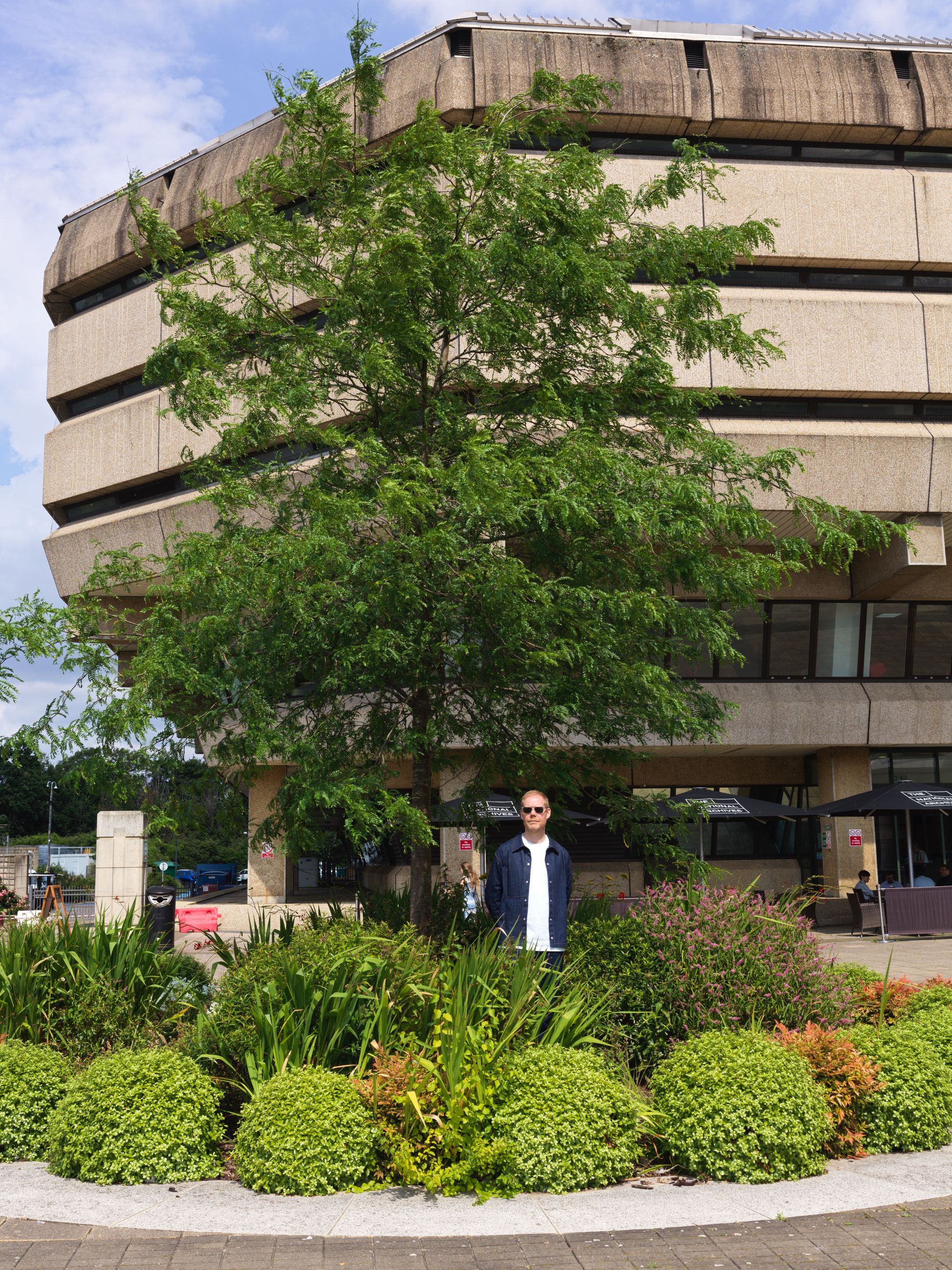
Max Richter photographed by Frederike Helwig for PIN–UP.
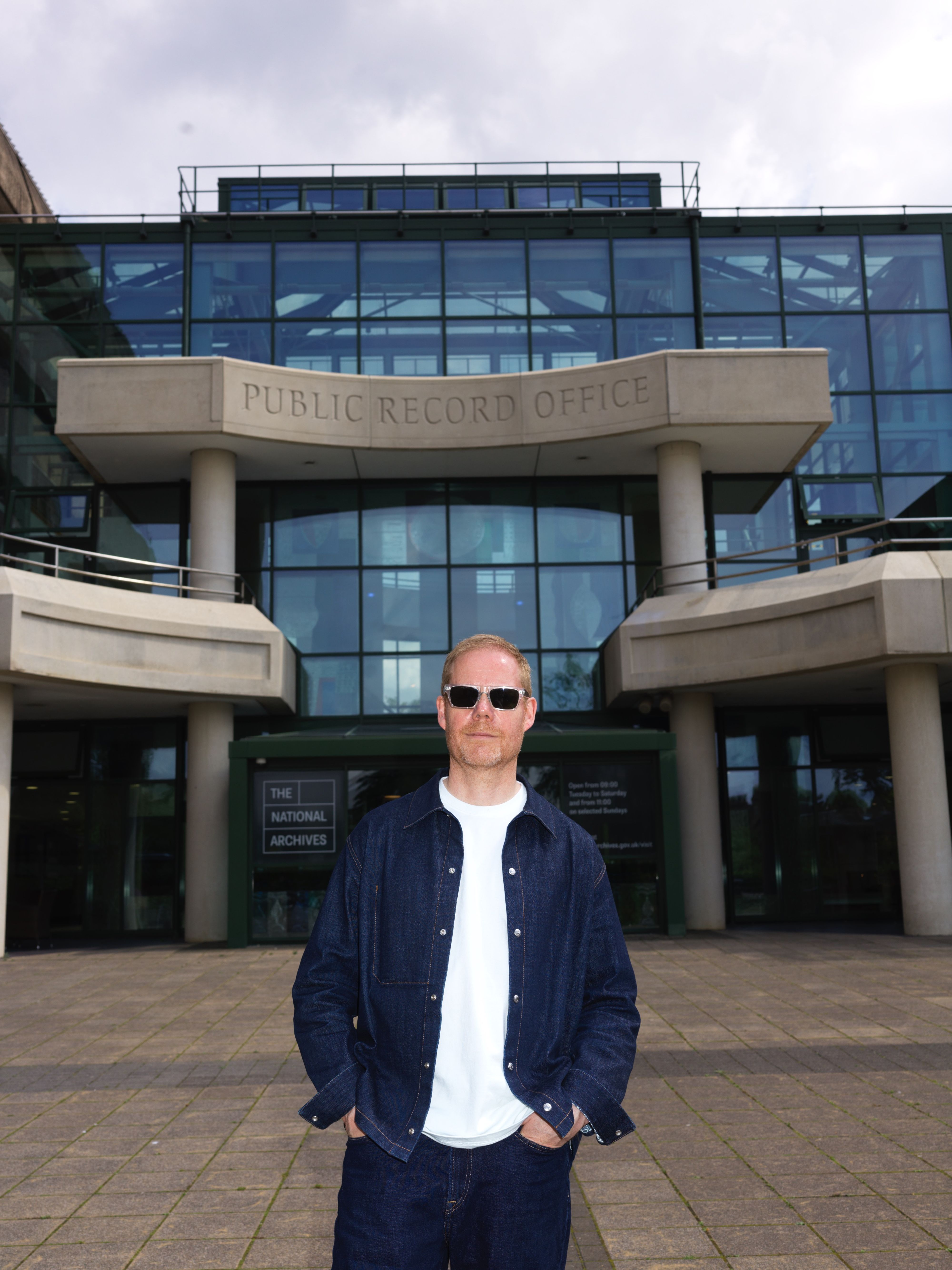
Max Richter photographed by Frederike Helwig for PIN–UP.
A far cry from stuffy classicists for whom music is a respite from contemporary concerns, the Anglo-German composer and pianist Max Richter sees his medium as a mode of communication, at once comprehensible, beautiful, and deeply engaged with the important topics of our time. Produced in collaboration with neuroscientists, his 2015 album Sleep aims to help the listener achieve a restorative night’s rest in a world where computers and smartphones have played havoc with our circadian rhythms. In Voices (2020), he set the text of the 1948 Universal Declaration of Human Rights to music, highlighting the need for renewed conversations about our common humanity. And this fall, in a demonstrative act of hope, he released In a Landscape, a subtle political protest album that seeks to bridge entrenched polarization. Yet Richter’s work never becomes didactic — instead creating a space for reflection and transforming his self-styled musical “plain-spokenness” into a shared conversation. The world, in turn, is listening: the eight-hour-long Sleep is among the most-streamed classical recordings of all time, and Richter’s releases regularly top the U.K.’s Classical Artist Albums Chart. Spanning the breadth of contemporary culture, his collaborations include scoring Dior runway shows for Kim Jones, commissioning voiceovers by Tilda Swinton, composing ballets for choreographer Wayne McGregor, and writing soundtracks for directors such as Martin Scorsese and Ari Folman. Richter is also no stranger to the intersection of architecture and sound. Alongside his wife, Yulia Mahr, Richter recently transformed a tractor shed in the Oxfordshire countryside into a sustainable multimedia studio, and his taste for the experimental has also led him to seek out unconventional venue choices — an abandoned railway station in Spain, a former turbine hall in Berlin, and a repurposed industrial space in New York. The clash of the old and the new, the mechanical and the emotional, fits Richter’s style. Indeed, his work often feels like a quiet, modern room with a view of the sky: grounded and composed, but open to something beyond.

Max Richter photographed by Frederike Helwig for PIN–UP.
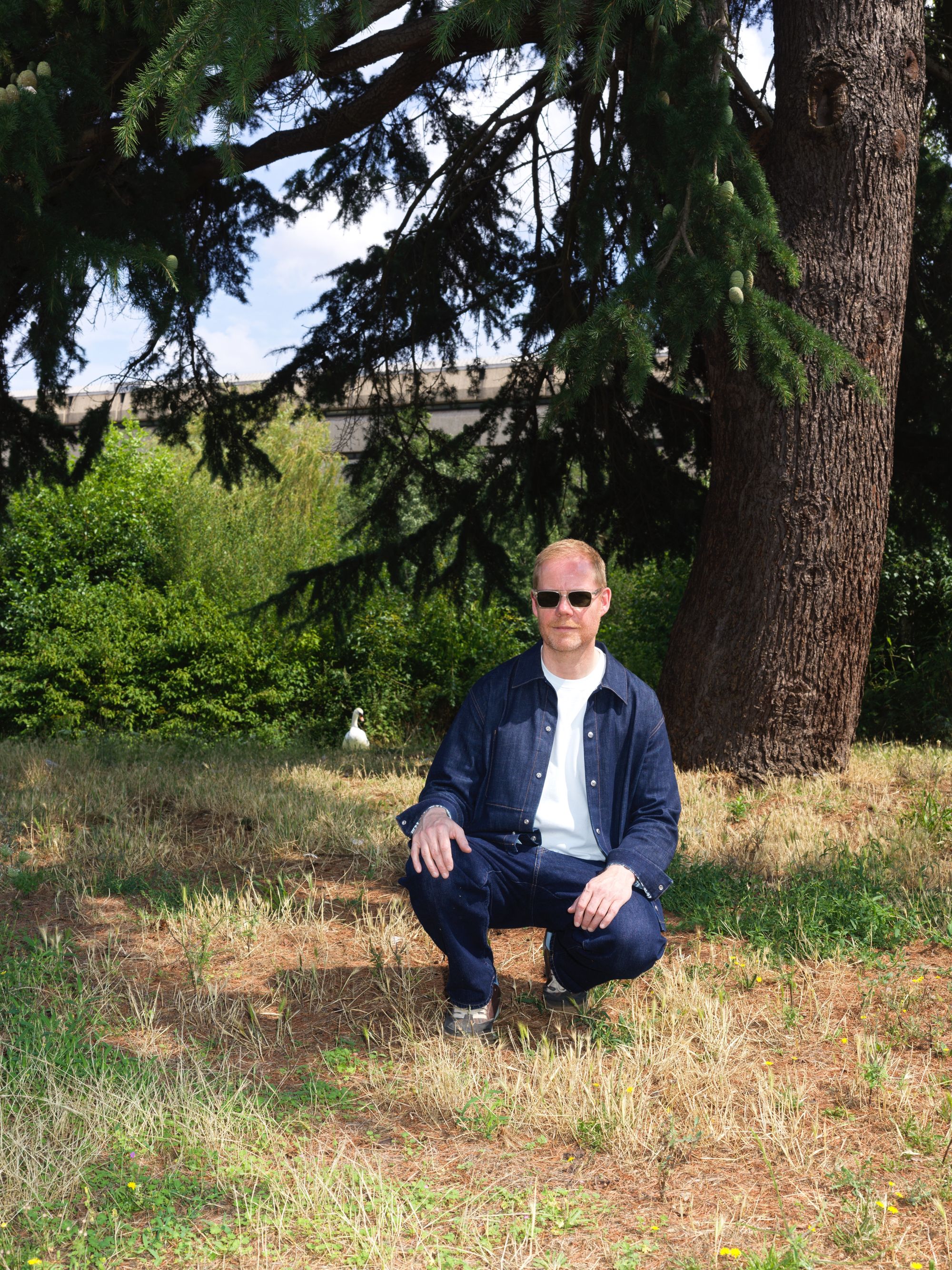
Max Richter photographed by Frederike Helwig for PIN–UP.
India Ennenga: You once said that whenever you enter a space, you immediately think about where to put a speaker system. What’s the most unusual place you’ve ever done that?
Max Richter: Well, the most fun recent setup was for the recent Rothko installation at the Fondation Louis Vuitton in Paris. We took over the entire building, placing live musicians in nine galleries, with electronic music playing throughout. It was a four-and-a-half-hour performance environment, where people wandered around viewing the paintings. I love Rothko and the questions his work raises, so this was a perfect gig for me.
How did you decide where to place the live performers versus the electronic sound?
The exhibition was organized chronologically, starting with Rothko’s early figurative work on the lowest floor, so we placed the human voice down there where the figures were. I also organized the pitch domain so that the higher someone went in the building, the higher the pitch of the music. Rothko’s later paintings are like moonscapes, very gray and fading, so it made sense to have these high, single lines floating off into space as the audience went upward. Simple ideas, but they worked as starting points.
It’s simple, but also very uncommon for a conversation like that to happen between a musical composition and a place. You’ve performed in so many unusual spaces that weren’t designed as concert halls. Do you think you’ve developed a relationship with architecture through working in that way? And what do you look for in a performance venue?
I think it depends on the work and its ideal habitat. For Sleep, for instance, we sought out very specific spaces. When we first played it, we chose Kraftwerk in Berlin, an old power station that’s upstairs from one of the city’s original techno clubs. They’ve taken everything out of the turbine hall, so now it’s just an enormous concrete room with that slightly odd quality that all reclaimed buildings have — those strange details, like a gap where an enormous generator used to be, for example. Its acoustics were perfect for Sleep, which is written for a long reverb. We also played that album in Antwerp Cathedral, which was completely different architecturally. Organ and choral music was written for that kind of space, so it was wonderful to borrow that enormous 16th-century reverb for a contemporary piece. Every place has its own fingerprint, and discovering how that locks together with the music is part of the fun.
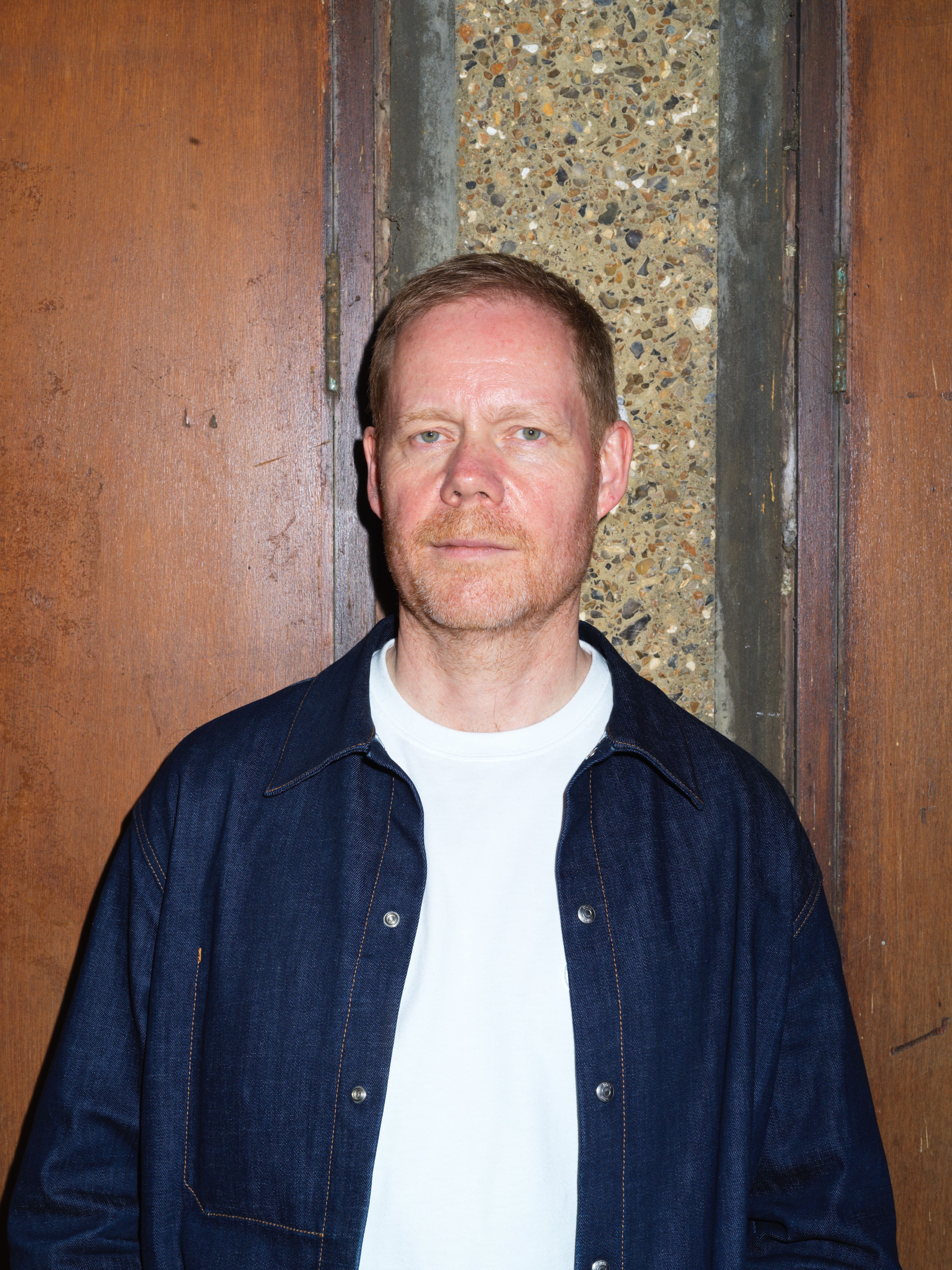
Max Richter photographed by Frederike Helwig for PIN–UP.
Do you feel that you have a different relationship with a space after you’ve played in it and observed how your music interacts with it?
Definitely. You get to know the space as you play in it. It’s like becoming friends. At first you’re wondering how it’s going to work, and by the end you’ve learned how to collaborate with the space. It’s a voyage of discovery.
You recently built a new studio in Oxfordshire. What was essential for you when designing a space around your work?
It was something my wife Yulia and I had been thinking about for a long time, but it wasn’t until Covid came along that we found the right spot — an industrial tractor shed in the woods near Oxford, where we live. Having spent a lot of time in recording studios, I knew what I didn’t want — dark, gloomy spaces with poor air quality. We wanted something full of light. We also designed the building to have a low environmental impact: it’s a solar-powered facility with heat pumps and a garden that sustains the café here. We’ve also got all the tech we need for broadcasts, recordings, Dolby Atmos mixes, and everything else, but it doesn’t feel like you’re working inside a computer. It feels natural — wood, concrete, simple materials.
Finding the right blend between the digital and the analogue was important for you?
Yes, and the building has both in many senses. I always record on tape, but the studio is wired for everything. We created the whole building to function like an instrument for us to realize our work, from scribbling an idea on a piece of paper to delivering a final mix.
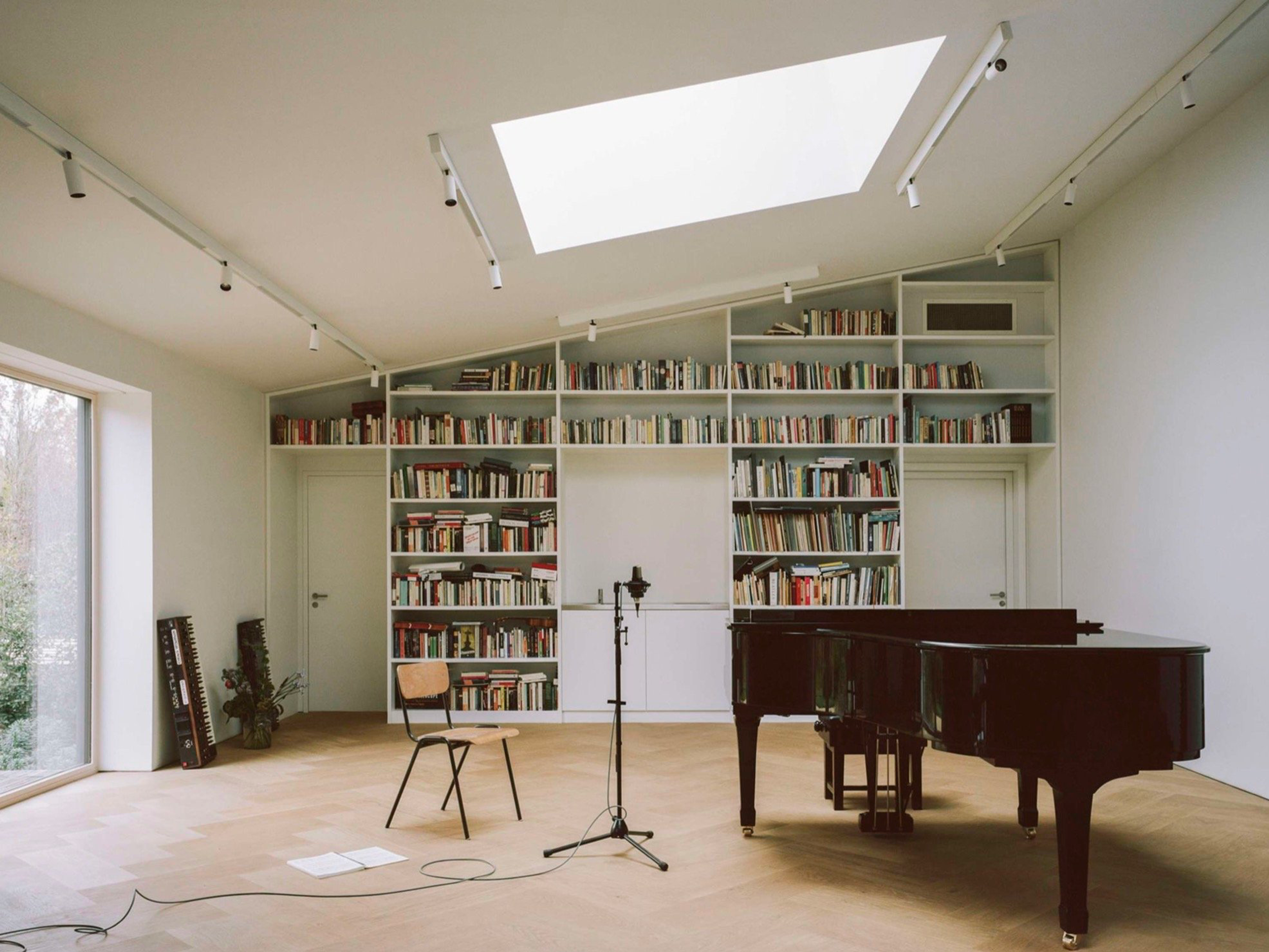
Inside Max Richter’s studio in the Oxfordshire countryside, a state-of-the-art recording and multi-arts production facility cofounded by Richter and his wife, visual artist Yulia Mahr. This “slow retreat” offers artists a space to explore their creativity away from the pressures of traditional music studios, embracing experimentation and the rhythms of rural life. Photography by Lorenzo Zandri.
There’s also a connection to the natural world — the windows really bring the landscape in. There’s a balance, it feels harmonious.
I actually think harmony is very important. It’s a word, like beauty, that’s often treated with suspicion in critical circles. But bringing things into harmony — whether socially or creatively — is a worthwhile goal.
You’ve described both nature and certain songs as “doors.”I t’s a beautiful metaphor and, at the risk of killing it, I’d love to ask if there’s a structure you imagine your own music opening onto when you compose.
One of the ways I try to discover the properties of a piece I’m working on is to think of it in terms of place. Not a physical place, necessarily, but how it might feel to be somewhere. I remember when I was working with [the violinist] Hilary Hahn, she said she was trying to figure out what “place” the piece I’d written looked like. I thought that was interesting. Understanding the texture and innate properties of a piece is part of figuring out how it all fits together.
Have you ever stood in a place and felt an affinity between it and your work?
It’s funny, I was having lunch with someone recently here, in the café at my studio. It’s very minimal, a white room with a large skylight in the ceiling, where you can see the clouds passing by. And my friend said that my music felt like the room we were in. I thought that was a nice analogy.
It’s so true of your work. There’s this conceptual framework, but it offers a view onto something uncontainable — whether the wildness of the natural world or eddying emotions. Do you think there’s a relationship between composing and architecture?
Definitely. Music, like architecture, deals with volumes and masses, with dynamic relationships between weight and lightness.
So both begin as marks on the page, but then become something like shelters for an audience to inhabit and interact with?
Yes. One of my go-to composers from the Modernist era is Iannis Xenakis, who was trained as an architect under Le Corbusier. And you can see that in his music — it’s all about volumes and space.
A key difference between the two practices is their relationship to time. Although, with the repetitions and subsonic elements in your music, it often feels like you’re playing with that. Do you think of your work as trying to escape the constrictions of linear time and become more spatial?
I certainly think that one of the things music can do is alter our perception of time. Fast music propels you forward, while repetition can lock you into a moment. Certain kinds of music can even make it seem like time stops. The pianist Martha Argerich put it brilliantly: she said that sometimes when you’re playing, the music turns into time itself. I think that’s pretty cool.
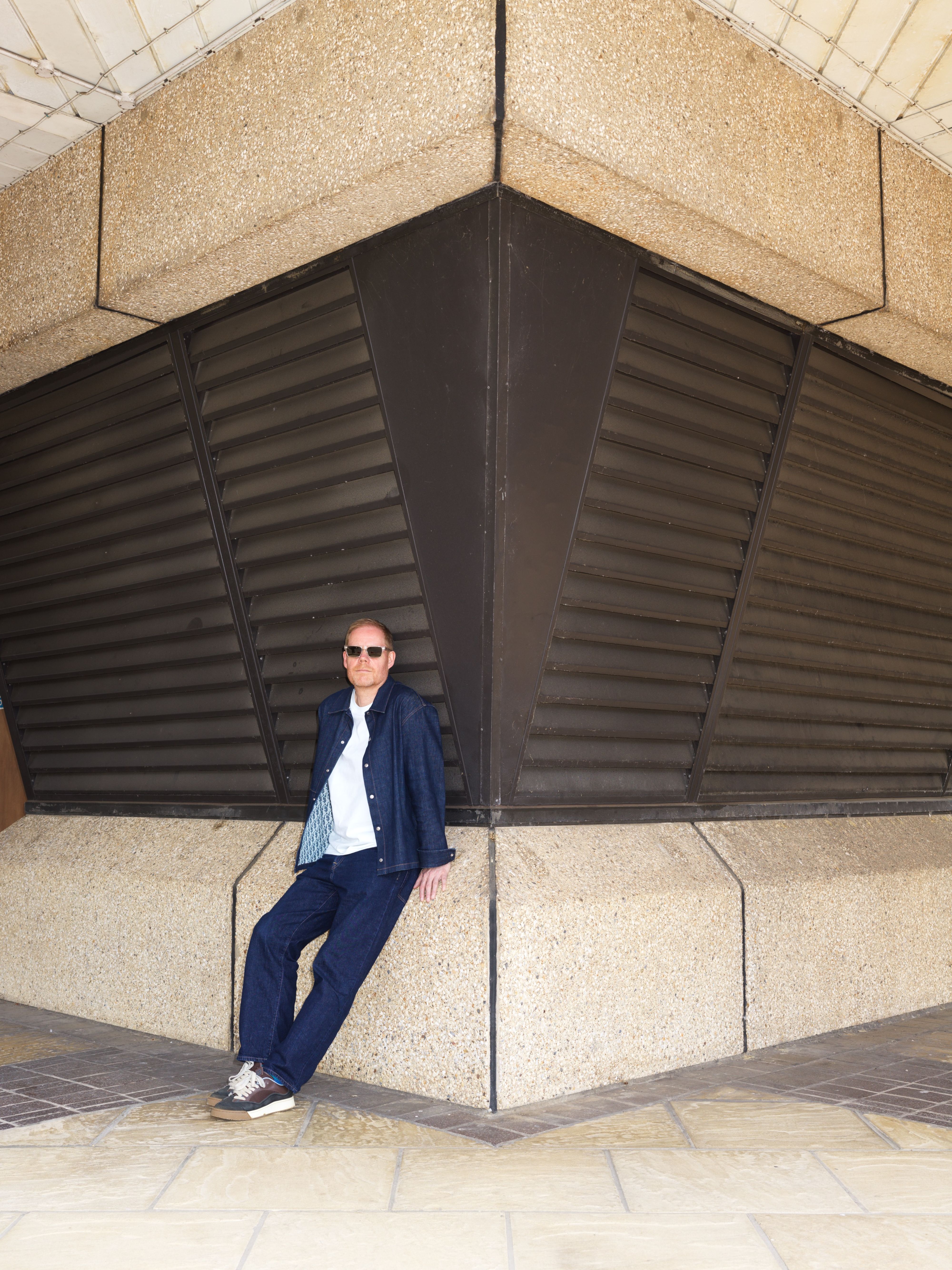
Max Richter photographed by Frederike Helwig for PIN–UP.
It makes me think about narrative structure too, and the many films you’ve written scores for. The director Andrei Tarkovsky talked about music in films as being like a poetic refrain — a point that allows the audience to return, to feel something familiar, but also see how it has changed. Does a movie score’s obligation to time and narrative alter your process?
There’s a huge difference, yes. Scoring a film is collaborative, it’s part of something bigger. It’s mostly puzzle-solving — figuring out what feels innate in the world of the film and how music can perform certain functions, like showing a point of view, marking time passing, or that magical and unique ability it
has to just make a scene glow. But that’s a lot of experimentation, trial, and error. I think of film scoring as a collaborative laboratory. Whereas, with a solo project, I’m building something that has its own grammar and coherence. It’s more structural.
You’ve spoken before about that careful construction process, which stems from your classical training, but which you also try to render invisible. How do you go about creating a piece in this way — balancing effort with effortlessness?
When I was studying, the orthodoxy was that a serious piece of music should be like a mathematical proof: you needed to demonstrate that you had invented a language and that this language was internally coherent. And the expectation was that the listener had to work incredibly hard to understand it. There are lots of problems with this, for me. I’m more interested in craft, in making something that’s as well-constructed as it can be while using the most minimal materials to get the job done. Einstein has this brilliant line: “Everything should be made as simple as possible, but no simpler.” That’s the balance I’m aiming for.
So part of the construction process is stripping back?
Actually, I would say most of the writing process is about taking things away, in order to achieve a sense of straightforwardness, until 90 percent of the piece is gone, and I’m left with just the essentials. That’s a reaction to the Modernist orthodoxy I was educated in — I suppose I’m still having my adolescent rebellion against that. I make music because I feel like I have something to say and, if I want to say something, I make an effort to be intelligible. It’s really as simple as that.
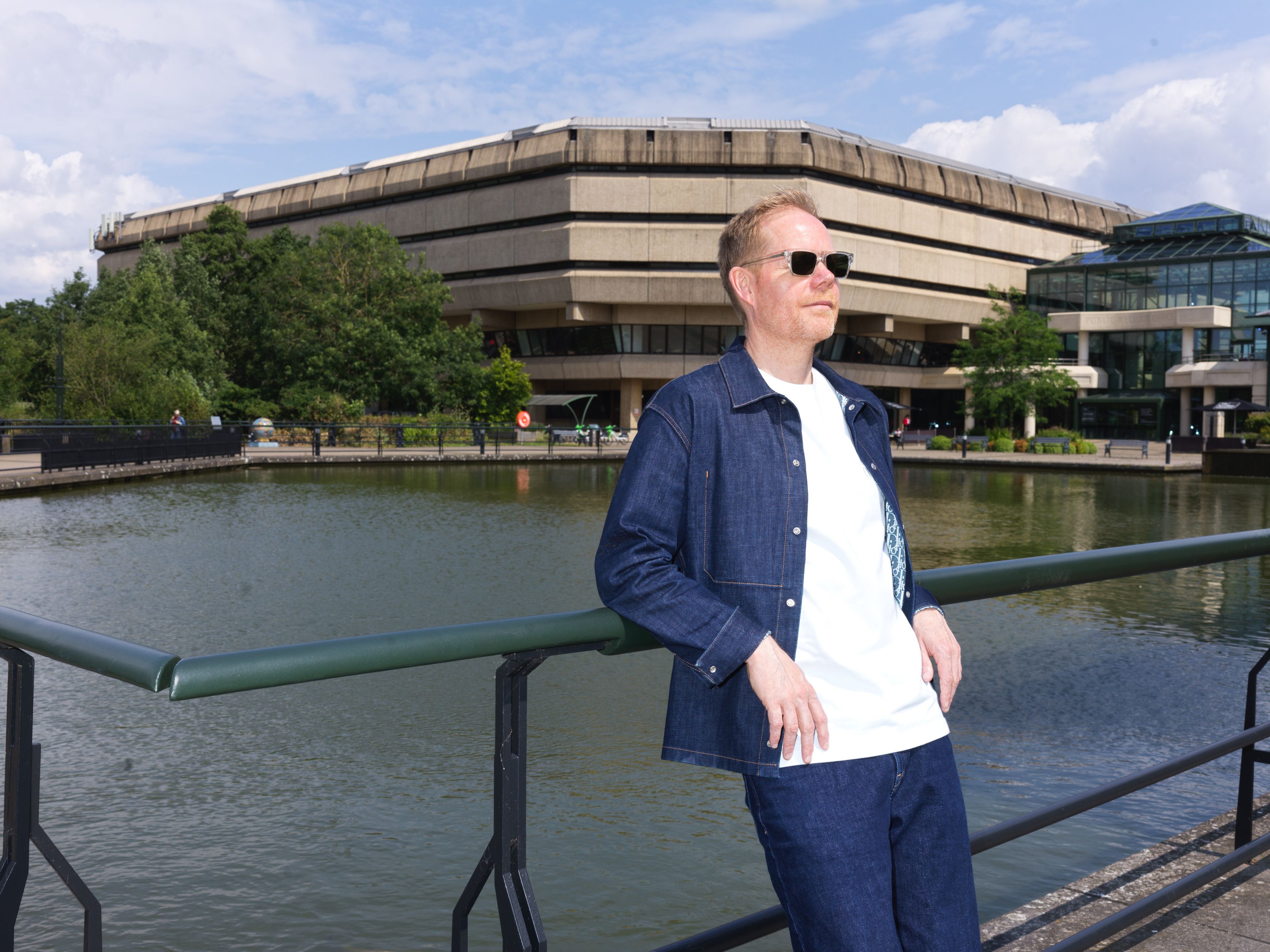
Max Richter photographed by Frederike Helwig for PIN–UP.
You often harness the power of other artists’ voices by referencing poetry and fiction. When you begin an album, is compiling references part of your research process? Do you read around a certain theme before you compose?
I love reading. And there’s always a story I’m trying to tell or something I’m trying to talk about. But how that manifests varies depending on the project. With The Blue Notebooks [2004], Kafka and Czesław Miłosz were the two origin points. Infra [2010] came out of the 2005 London terrorist bombings, so we reached into Eliot’s The Waste Land for the “unreal city” reference. Voices was about the Universal Declaration of Human Rights, so we set that text to music.
Do you have a personal archive — a physical space where you organize references?
My whole life is an archive, honestly. And I suppose the albums themselves are where I organize the references in someways. The work is what helps make those connections clear — it helps me resolve questions, put things into context, and understand how it all fits together. Then the resulting record is a “What if?” version of that.
The fragments of speech and poetry you incorporate almost feel like they’re pointing the listener toward books on your shelf. Do you hope people will track down the quotes?
Yes. And there’s a lot of enthusiasm and affection driving that. When I find something that really resonates and feels broadly relevant, I want everyone to read it or hear it.
You’ve got a wide reach of friends to recommend things to!
Exactly! There’s a bit of a “Hey, everyone, look at this amazing thing!” feeling in there. It’s a kind of instinctive reaction.
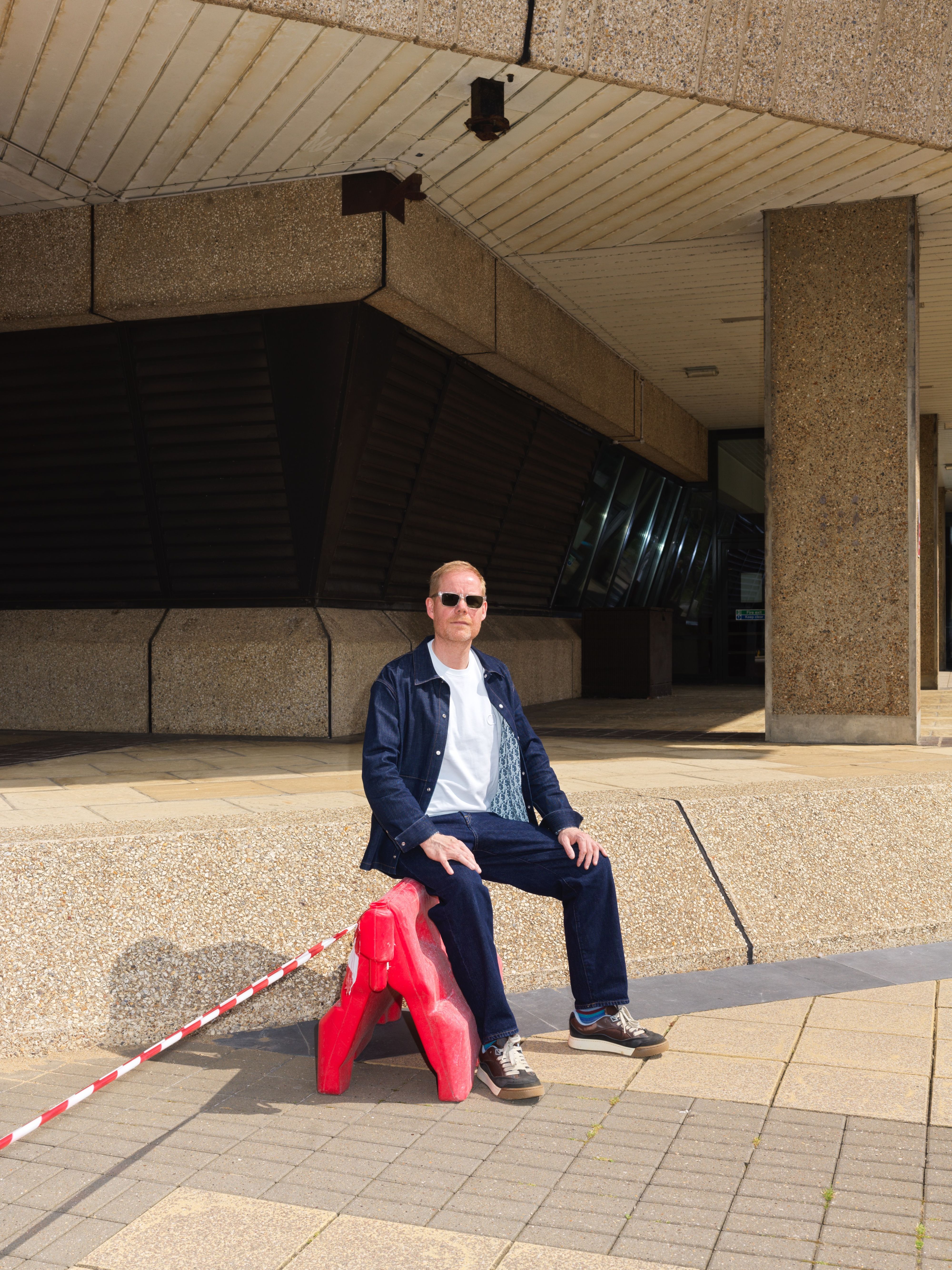
Max Richter photographed by Frederike Helwig for PIN–UP.
Some of your references are very out in the open — they might even be included in the track title — while others are less obvious. How do you manage which references remain private or personal and which become public?
It’s so interesting because that happens spontaneously, in so far as you never know how a thing is going to land. Sometimes I think a reference is really clear, and I’m trying to make it clear, but people don’t pick up on it at all. Infra, which treats Schubert’s Winterreise almost as a found object, is a great example. There’s lots of Schubert floating around in the piece — which I thought was obvious, I mean, it’s truly everywhere — but nobody noticed. Or in The Blue Notebooks there’s a track called Old Song, which uses the entire piano part from a really famous piece by Schumann, Hör’ ich das Liedchenklingen, in which the singer laments that their lover is gone. And the whole conceit of my repurposing that piece is meta-textual: the original singer is also gone now, and the piano is lamenting their lamentation. When I wrote that piece, I thought, “This is really clear. It’s like the musical equivalent of me saying, ‘To be or not to be.’” But apparently not! And when no one noticed, I felt like, “Oh my god, is nobody hearing what’s going on here? Guys, you’re missing the whole thing!”
Are you ever tempted to just come out and say, “Here is the reference. How are you not getting this?”
Well, the not knowing is such an interesting part of the process, and I like to keep that intact. Because things that mean something to me will mean something completely different to someone else. We all listen through the lens of our biography and our own enthusiasms. It’s fascinating to see how others engage with it.
Speaking of personal biographies, I want to ask about the National Archives in Kew, where the portraits for PIN–UP were shot, as they house some of [George Frideric] Handel’s private records. You and Handel have some biographical overlaps. Do you have a relationship to his music?
There are no Handel references that I can think of right now, although he’s a fascinating figure. Like me, he was a German composer living in the U.K. But what’s so remarkable about him is how versatile he was — the Swiss Army knife of music! And prolific — he wrote 60 operas. Who does that? Bach once said, “If I weren’t Bach, I would want to be Handel.” That’s high praise. I would settle for that.
The cover for your most recent album, In a Landscape, features some of the books you were inspired by. Could you tell me which ones?
There’s Ulysses, Lucy Ellmann’s Ducks, Newburyport, which I loved, Tom Tolman’s Butterflies of Britain and Europe, and a book by Anne Carson, although I can’t remember which now.
It’s a mix that really encapsulates the album’s feel — a blurring of fiction and nonfiction, the natural and the urban. Was creating a record of that a driving force behind the work?
I definitely feel like this record is kind of diaristic or has something of the character of a memoir. It reflects the themes and concerns of The Blue Notebooks, which is a piece I’ve been thinking about recently because it’s 20 years old and is very much in the noble tradition of the protest record. I see In a Landscape as taking another look at those themes, but this time through the prism of bridging polarities. One of the big challenges we’re dealing with right now societally is this polarized situation, where people with mild disagreements can’t even be in the same room together. There’s only shouting and no listening.
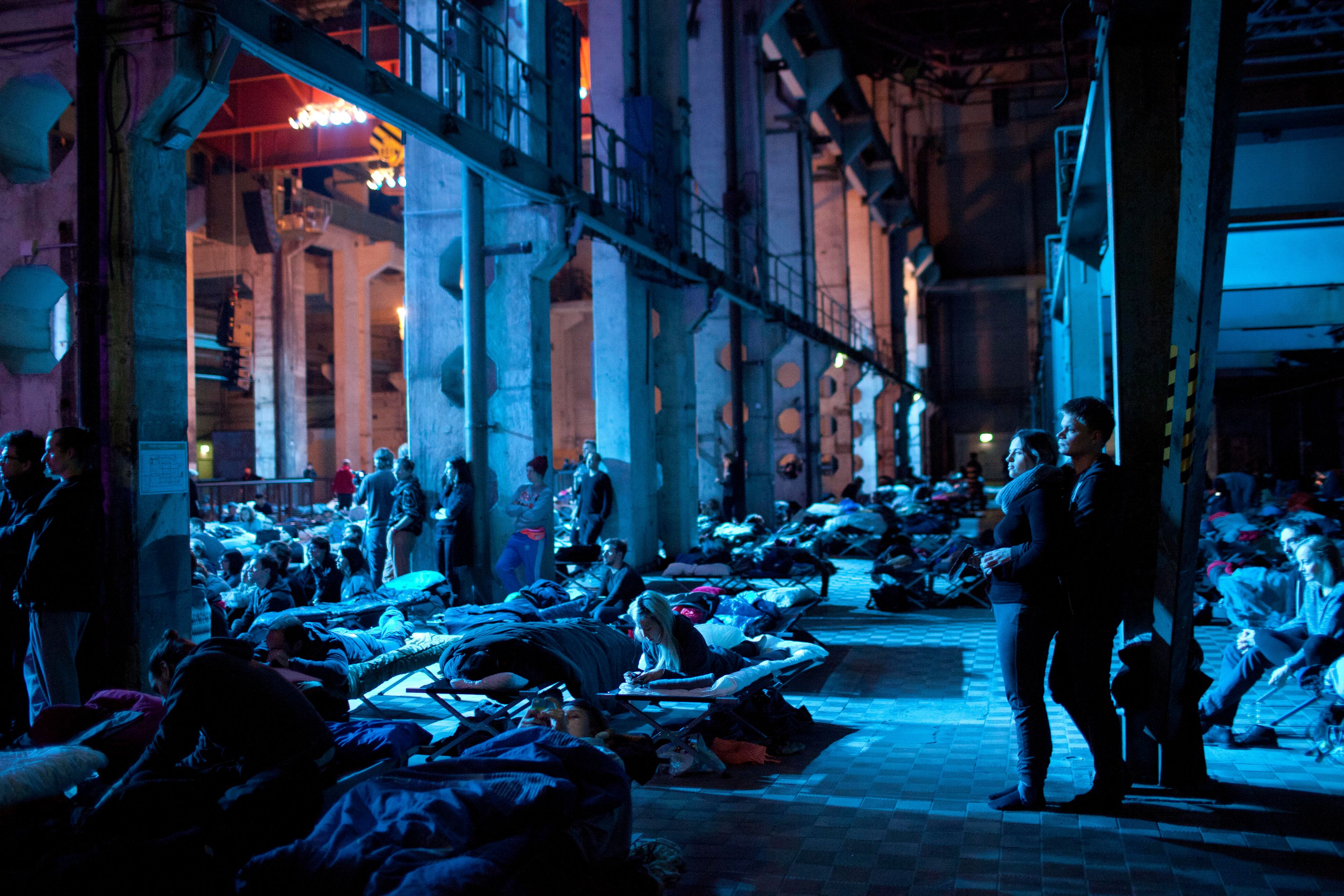
In March 2016, Max Richter performed his eight-hour lullaby album, SLEEP, to a slumbering audience of 400 people at Kraftwerk in Berlin. Photo courtesy Max Richter.
How can music, in that sense, bridge contradiction or difference?
I wanted to approach it by making a piece that modeled a fruitful relationship between disparate things: electronic music versus acoustic music, composed music versus found objects, the human world versus nature, and the two readings of the inner landscape, exterior and interior. I was trying to put these things together and see if they could speak to one another.
You’ve said before that an essential part of any creative work is what the audience brings to it. With this album, did you try to bring listeners in, to make space for them?
Yes, definitely. The life studies on the album, which are the interludes between the tracks, are entry points — spaces to reflect on what you’ve just heard. They’re like little out-breaths to the in-breath of the composed music. But they also document the writing process in a casual way. They’re unmediated found objects from my life that say, “Here I am making breakfast with the kids,” or “Here I am in an airport in Hong Kong.” They’re plain-spoken in a sense, without artifice. That kind of approach — that directness — is something I really value.
Is that another polarity in the album: a contrast between these very constructed, thoughtful pieces and more spontaneous, emotional moments?
Yes, exactly. The dynamic is about intention versus happy accidents.
Your track titles are really interesting on this record. One mentions biophony, and another geophony, which are terms from landscape ecology meaning the sounds that animals and nonliving things make in an environment. How did nature influence this record? Did you see the album as building its own, closed environment?
I think every project is a constructed world. It’s a “What if?” proposition — you wonder how we’d behave in such a world.That’s a lot of what creative work is, I think — either wish-fulfillment scenarios or speculative ones. In terms of soundscape ecology, I like the idea that soundmaking in the world isn’t just a human thing. There’s this whole other aspect going on. In part, the emotional texture of the record comes from having this studio in the Oxfordshire woods. There’s a different tempo here, and that seeps into you over the years. Yulia and I are very deliberate about spending time in nature. Being in contact with things that operate on a different timescale than you is just good medicine. It’s a nice corrective for the conceptual, screen-based life most of us lead.
It goes back to the idea of harmony — harmony as a medicine.
Yes, absolutely. That’s what I want to embrace.
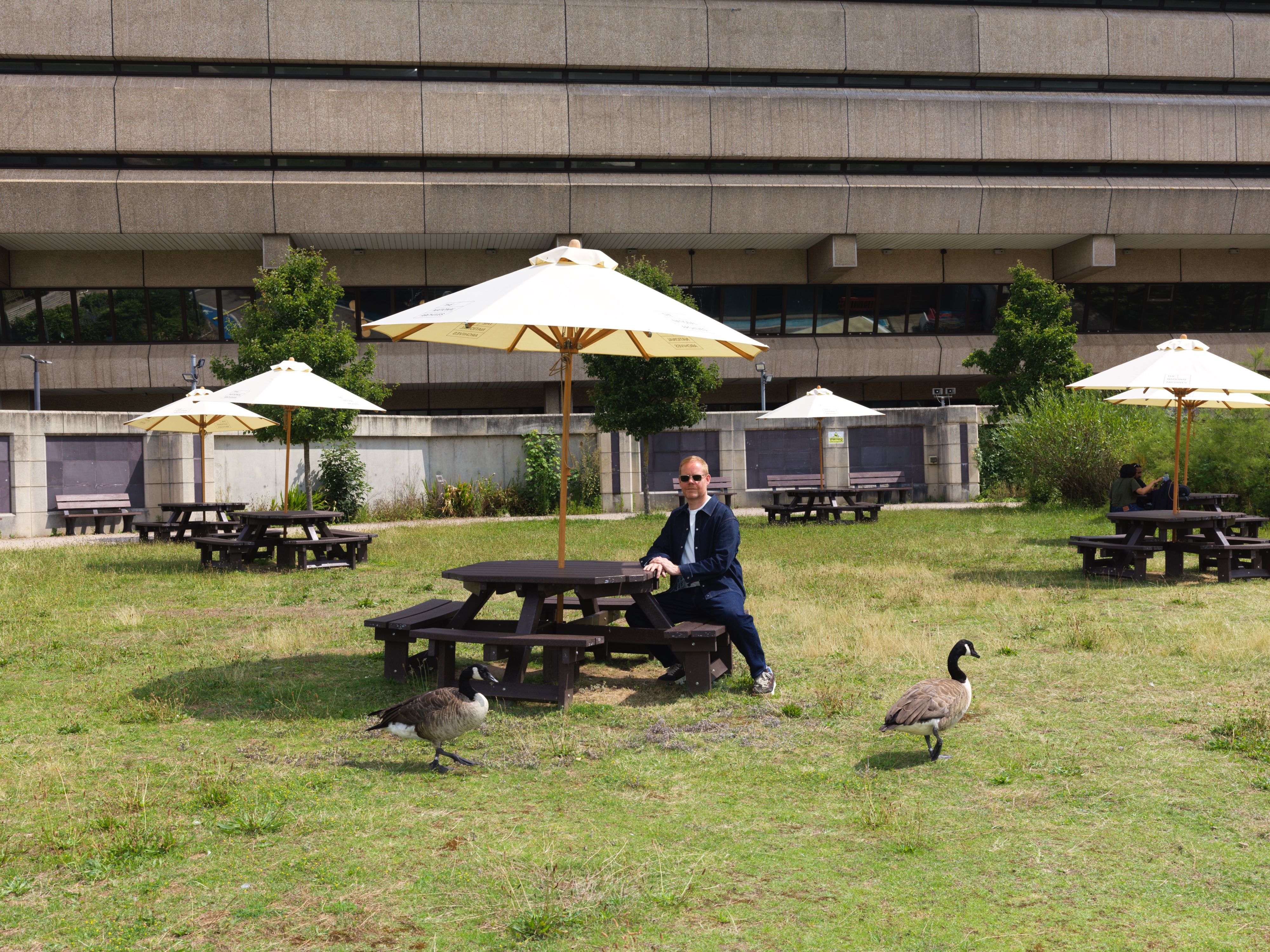
Max Richter photographed by Frederike Helwig for PIN–UP.